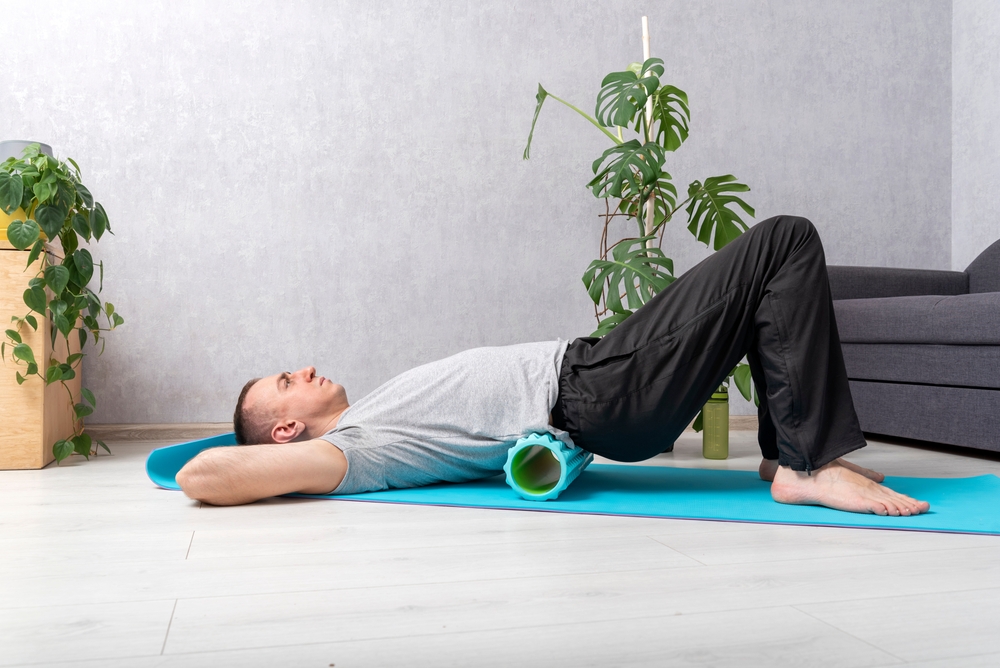While the world of physical therapy has evolved in major ways due to modern technology and can regularly utilize cutting-edge equipment or programs to help patients heal, some of the most effective tools in a physical therapist’s toolbag often remain some of the simplest. One great example: Foam rollers, which are simple and affordable – but continue to play important roles in physical therapy and related forms of muscle and bodily recovery.
At ImPackt Physical Therapy, we’re proud to employ a wide range of physical therapists who apply numerous different forms of therapy, from manual therapy to high-tech options like radial pressure wave therapy and more. Foam rolling is a regular part of many of our recovery programs for patients, both in our facilities and at home. Here are some of the chief benefits of foam rolling for physical therapy and any similar form of recovery.
Easing Pain
Dealing with pain is a big part of any physical therapy or recovery program. Foam rolling can help ease pain by breaking down adhesions and scar tissue, improving blood flow, and reducing inflammation in the muscles. This can lead to reduced soreness and improved mobility for patients.
As a patient rolls on the foam roller, their muscles are being massaged and stretched, which can provide relief from muscle tension and tightness. This can be particularly beneficial for patients recovering from injuries or surgery.
Improved Range of Motion
Limited range of motion is a common issue that physical therapy aims to address. Foam rolling can help improve flexibility and mobility by targeting specific muscle groups and breaking up any restrictions or tightness in those areas.
Foam rolling also helps improve blood flow to the muscles, which can increase oxygen and nutrient delivery to the tissues. This can lead to improved overall function and range of motion for patients.
Injury Prevention
Foam rolling is not just beneficial for recovery; it can also help prevent future injuries. By regularly foam rolling and releasing any muscle tightness or imbalances, individuals can improve their body’s overall alignment and stability. This can help reduce the risk of strains, sprains, and other common injuries.
Moreover, foam rolling also helps to promote proper form during exercise or physical activities by improving muscle activation and control. This can significantly decrease the chances of accidents or improper movement patterns that could lead to injury.
Improved Performance
In addition to injury prevention, regular foam rolling has been shown to improve athletic performance. By increasing range of motion and flexibility, individuals may see improvements in their strength, power, and overall physical performance.
Foam rolling has also been linked to improved balance and stability. By targeting specific muscle groups and improving their flexibility, individuals can better maintain proper posture and control during physical activities.
Overall Well-Being
Beyond just physical benefits, regular foam rolling can also have a positive impact on an individual’s overall well-being. The act of foam rolling itself can be relaxing and may even reduce stress and anxiety levels.
Foam rolling has also been linked to improved sleep quality. The release of tension in muscles through foam rolling can promote relaxation and ultimately lead to better sleep patterns.
Choosing the Ideal Foam Roller
If you’re in a physical therapy facility like ours at ImPackt Physical Therapy, your physical therapist will guide you on choosing the proper roller for your needs. If you’re looking to get into foam rolling at home, however, here are some tips for choosing the right foam roller:
- Consider type: There are several types of foam roller available today, including standard rollers, high-density rollers, textured rollers and various shorter rollers meant for portability or tricky bodily areas. Be sure you choose the type of foam roller that best fits your specific needs.
- Consider size: Foam rollers come in various lengths and diameters. The standard size is 36 inches long with a 6-inch diameter, but there are also shorter options available. Make sure to choose a size that best suits your body and the areas you plan on targeting.
- Consider density: Foam rollers come in different densities, which determine how firm or soft they are. If you’re new to foam rolling, it may be best to start with a softer roller and gradually move up to firmer ones as your muscles become more accustomed to the pressure.
- Try before you buy: It’s always a good idea to try out different foam rollers before making a purchase. This will give you a chance to see what feels comfortable for your body and how it responds to the pressure of the foam roller.
- Use proper form: When using a foam roller, make sure to maintain proper form and technique. This includes keeping your core engaged, relaxing your muscles, and rolling slowly over each muscle group. Avoid rolling too quickly or putting excessive pressure on any one area.
At ImPackt Physical Therapy, we regularly help patients utilize foam rolling as part of their physical therapy or recovery programs. For more here, or to learn about the various services our physical therapists offer to patients around Utah, contact us today!



